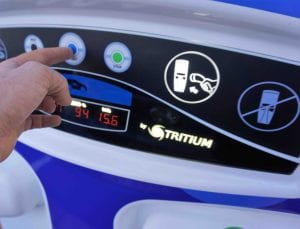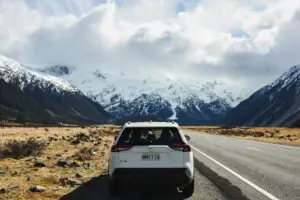It was just a few years ago, at the height of the debate about the fairness of solar feed-in tariffs, when we made fun of the Queensland Competition Authority’s extraordinary attempts to protect the interest of the government-owned networks.
It had come up with a proposal to hit solar households and get more revenue from people using less energy from the grid. It proposed a special time-of-use tariff targeted to solar households only.
In an extraordinary ruling, it admitted that the tariff would be unfair, probably ineffective, more expensive, inequitable, and illegal, because it would be contrary to the rules of the National Electricity Market. But it recommended the tariff all the same, because it would protect network revenues.

It seems not much has changed. More than three-and-a-half years later we find ourselves writing a story with much the same headline as we did in March 2013, when we asked Should regulators protect consumers, or network operators?
State based regulators continue to duck the issue of fair solar tariffs, with the possible exception of Victoria’s Essential Services Commission which has been forced to address the issue of a fair price for solar by the state Labor government.
But even when it came to consider network benefits of solar, the ESC would only frame it in the context of future investment.
Past spending on poles and wires and connections is considered sacrosanct and untouchable. How companies from the every other sector in industry – who inevitably have to write down the value of assets in the fact of a more competitive technology – must envy their position.
But this view holds not just for state-based regulators, it also holds in the federal sphere, where the Australian Energy Market Commission appears completely disinterested in tackling the issue when recommending rule changes and policies.
So much so that one investment report we highlighted this week appears convinced that the AEMC will not just allow utilities to jack up revenue collection from consumers even if they lose less of the grid, they will force them to pay hefty fees whether they remain connected or not.
“The Australian Energy Markets Commission (AEMC), the key regulator of Australian energy markets, highlights the networks will be allowed to vary the price of grid connection to ensure the cost of capital on the network is recovered,” wrote CLSA analyst Baden Moore writes.
“On this basis, the cost of the network will be recovered from all consumers regardless of their usage of battery and solar energy.”
And the AEMC wants to protect the incumbent generators as well.
In an analysis it has commissioned from Frontier Economics, it describes the loss of revenue for coal and gas generators from a high renewable energy target as a “transfer of wealth from the generator to the consumer”, and therefore should be stamped out.
It has been arguing that position for years. It put the same view was put forward in 2014 at the height of the debate about the renewable energy target.
It shows that despite the continued proliferation of rooftop solar, and its ongoing plunging costs, the arrival of battery storage and the development of smart software, new concepts such as solar sharing and trading and the creation of virtual power plants, nothing much has changed.
The automatic reflex of the institutions that govern our electricity market, the rules and the pricing, is to protect the incumbents. Some go on about “consumer choice”, but this is essentially about the ability to switch retailers, a cost that is factored in to the utility profit margins.

It takes little account of the shift from centralised generation to the consumer, the development of local sharing and trading, variously described as the emergence of the “prosumer”, and the democratisation of energy.
Recent reports have highlighted how dangerous and counter-productive this thinking is. The CSIRO and the networks owners issued a fascinating report looking at the pace of change in the energy market, and how quickly households and business could adopt more solar and more battery storage.
They suggest the amount of solar could increase five-fold in a decade, accompanied by a massive take-up in battery storage. Importantly, the networks concede that for them to play a role in the future, retain the consumer and protect their asset base, they need to change the way they do business.
That requires a rapid and thorough change of rules, a position that was underlined by the Finkel report on energy security, who also wrote of the “unstoppable” energy transition and the need to stay on top of market rules and technology shifts.
The solutions to the challenge of this transformation were readily available, Finkel noted, but the rules and the design of the National Electricity Market were simply not up to the task.
This, though, has been something the rule maker has been reluctant to engage with. And an added problem is its reliance on modelling that bears no relation to the real costs of renewables.
“Perhaps this is the greatest challenge the industry faces in 2017, that is getting the AEMC to wake up to itself,” writes ITK analyst David Leitch.
The consumer is about to play an ever important role in the energy market. They will no longer be reliant only on a centralised grid, and will have ready alternatives to the costly supply of centralised energy.
The CSIRO and network owners report, as others have made clear, suggests that consumers – households and businesses – will be supplying half of all electricity needs within a few decades. The regulators need to start taking that into account.










